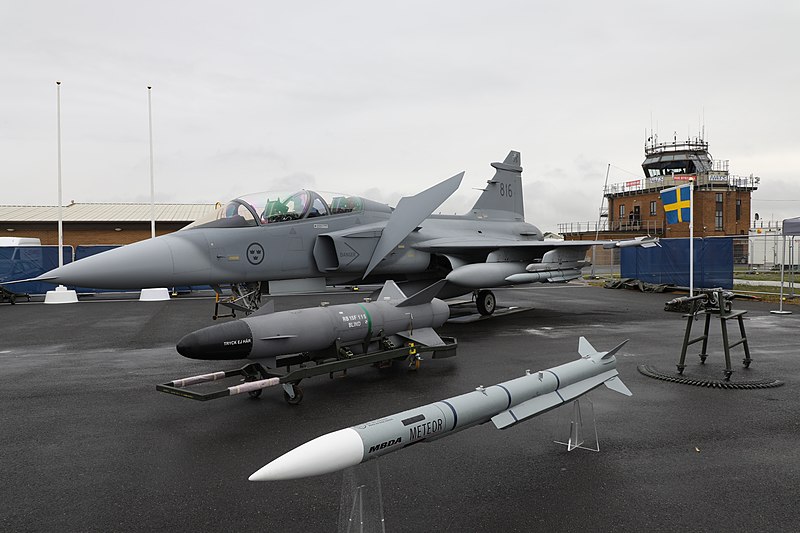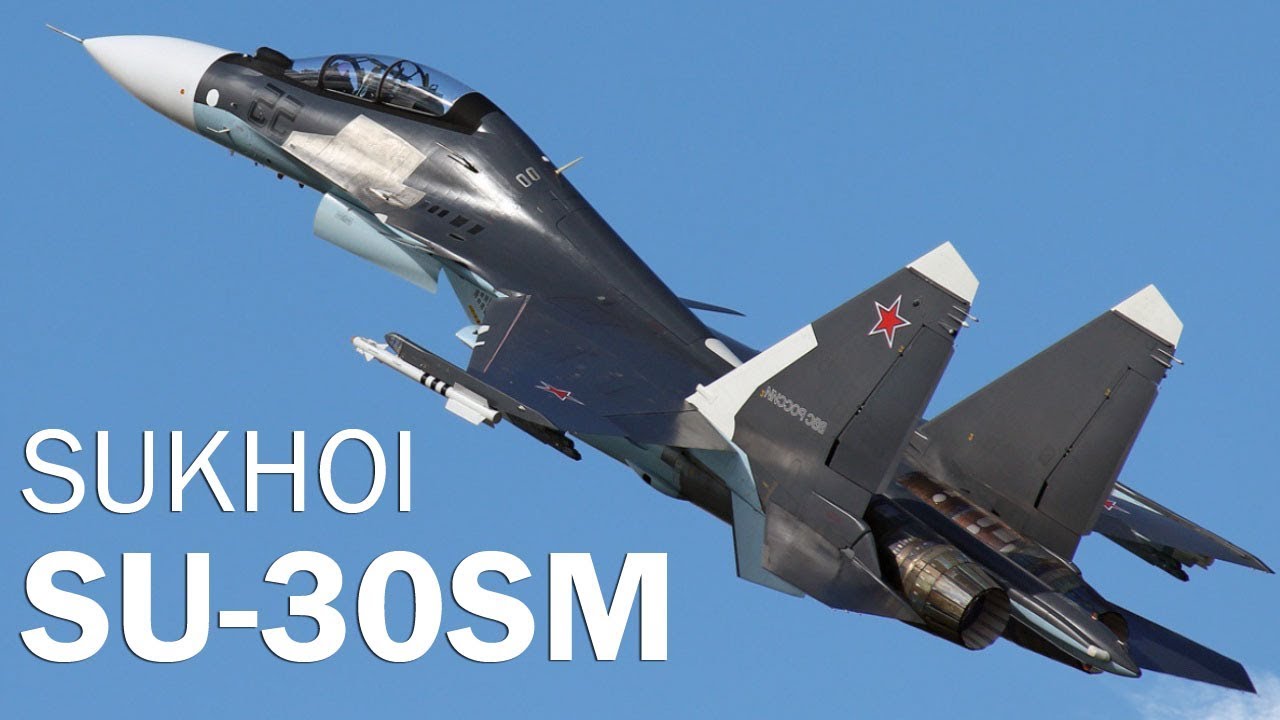A leading UK-based defense think tank has recommended that the West consider providing the Ukrainian Air Force with Saab JAS-39 Gripen C/D fighter jets to prevent the ongoing Ukraine war from shifting dramatically in Russia’s favor.
Experts from the Royal United Services Institute (RUSI) said in a report published on November 7 that the Swedish aircraft offers “by far the most suitable candidate” for Western-made fighter jets regarding operational requirements for Ukrainian air defense.
Experts highlighted the importance of the delivery of fighter jets to Ukraine, in addition to the Surface-to-Air Missile (SAM) launchers, missile ammunition, and self-propelled anti-aircraft guns, saying if these are not delivered, Ukraine would be left vulnerable to another Russian strike campaign that needs to be resisted to avoid a dramatic shift in the current momentum of the war.
“Conceptually, the Swedish Air Force has always emphasized low-level air superiority tactics from dispersed bases, in a similar manner to how the Ukrainian Air Force currently operates, and so the Gripen was designed with ground support equipment and maintenance requirements compatible with that approach,” stated the publication.
Russia has a formidable long-range fire capability in the form of several ballistic and cruise missiles and kamikaze drones provided by Iran. Additionally, Russia has even used its Kinzhal hypersonic missile in the ongoing Ukraine war, which even US President Joe Biden himself admitted is “almost impossible” to intercept.
Therefore, many doubted Ukraine’s fleet of fighter jets would last long against Russia’s long-range strikes and disproportionately large air force.
However, more than eight months into the war, Ukraine’s Air Force has kept the Ukrainian airspace contested, despite being outnumbered by the Russian military.
This is because the Ukrainian military planners recognized Russia’s long-range fire capability. Therefore, Ukrainian fighter pilots adopted flexible tactics like keeping the aircraft moving from one airfield to another and flying difficult flight paths to reduce the chance of the enemy catching them on the ground.
The Swedish Air Force (SwAF) is known to operate similarly. Sweden’s tactics of wartime dispersal of warplanes have received acclaim from the US Air Force as well, which is known to have sent its personnel to Sweden to learn these tactics.
“The ability to disperse aircraft is a specialty of theirs,” The Commander of USAFE, General James B Hecker, said of the SwAF in August, adding, “Sweden has got Agile Combat Employment (ACE) down better than any other air force in the world, and we are going to exploit that [knowledge for NATO]. It’s very exciting!”
Sweden’s Strategy Of Dispersing Its Gripen Jets
The Soviet threat during the Cold War led Sweden to develop an air-basing strategy that dispersed the fighters throughout its territory, making it difficult for the Soviet forces to destroy the entire Swedish fighter fleet on the ground in a surprise attack.
This strategy, also known as the BAS 90 program, involved several airstrips hidden in forests and reinforced highways adjacent to the main airstrips as backup runways. The Swedish fighter jets are designed to operate from such small airstrips and straight stretches of road.
The SwAF’s Gripen C/D fighter jets, for example, can land at 600 meters and take off at 500 meters, as per the claims of the aircraft maker, SAAB.
The landing strip only needs to be 16 meters wide. This short take-off and landing (STOL) capability enables the Gripen to fly from taxiways, small civil airfields, or highways. The fighter was equipped with canards that created more lift at slower speeds during landing and helped increase its angle of attack.
Once the fighter touches down, it has to be stopped quickly. For this, the Gripen’s predecessor SAAB 37 Viggen, had a thrust reverser that slowed down and brought the aircraft to a halt.
However, SAAB decided to drop the thrust reverser system and instead used the canard and wheel brakes to stop quickly.

“We use the canard and the wing rudders to create aerodynamic downforce to make the brakes more effective,” Eddy de la Motte, head of the business unit for SAAB Gripen E/F, told FlightGlobal. “It’s like what you do on Formula 1 or NASCAR.”
Also, rather than servicing the aircraft at fixed repair depots, mobile maintenance crews, driving vans and military trucks, bring fuel, munitions, and parts to the aircraft’s position.
SAAB claims that refueling and rearming, including reloading the gun and attaching air-to-air missiles, can be completed in less than 10 minutes with only one technician and five conscript mechanics.
The entire maintenance equipment fits inside a single small shipping container, and the maintenance areas of the jet are made easily accessible with the help of push-button latches that are used to open and close access panels.
Also, the service panel and refueling hatch are located in the same area to minimize the crew walking around time.
“It was a must that it was easy for a conscript with only one year of training and education,” Mikael Olsson, head of flight testing for SAAB and a former Viggen pilot, told FlightGlobal. “For example, changing an engine in the woods or on the bases, the requirements were you should do that in an hour,” he said.
The engine can be detached from the airframe by removing just a few bolts, disconnecting the fuel, hydraulic lines, and gearbox, and lowering it using hand-cranked fishing rod-like winches. This tool can also be used to load missiles onto aircraft pylons.
After the refueling and rearmament of the aircraft are completed, the ground crew disappears into forest encampments. Personnel and equipment are positioned near runways very briefly to avoid being killed or destroyed in an attack.
Swedish Gripens To Meet The Russian Challenge?
In addition to the easy dispersal of Gripen fighter jets, experts at RUSI also noted that the Swedish fighter jet has an electronic warfare suite optimized specifically for countering Russian fighters and SAM radars.
Furthermore, the experts pointed out Gripen’s anti-ship capability and the ability to fire MBDA’s Meteor beyond-visual-range air-to-air missile (BVRAAM).

“European Meteor missile, thanks to its ramjet propulsion design, is less adversely affected by being launched from low and slow than traditional rocket-powered missiles such as R-27 or AIM-120 AMRAAM,” the publication stated.
According to RUSI’s report, even a few modern Western-made fighters like Swedish Gripens, equipped with long-range missiles, could meet the Russian Air Force on technically equal or even superior terms, resulting in a disproportionate effect.
If Swedish Gripens are provided to Ukraine, they would be up against the Su-35 and Su-30 multirole fighters that the Russian military has extensively used in its ongoing special military operation for air-to-air and air interdiction missions.
EurAsian Times asked veteran Indian Air Force (IAF) fighter pilot Vijainder K Thakur if the Gripens would be as effective against the Russian Su-35s and Su-30s as the experts at RUSI have suggested.
“Situational awareness, initial positioning, tactics & weapon system capabilities decide the outcome of air combat. Gripens operating under AWACS cover will have better situational awareness and enjoy an edge, otherwise Sukhois,” said Thakur.
So far, it seems unlikely that Ukraine could get its hands on the Gripen jets anytime soon. However, if Gripen C/D jets are indeed approved for transfer to Ukraine, European Operators that could execute such deliveries include Sweden, Hungary, and the Czech Republic.

“The [RUSI] report identified many of the excellent qualities of Gripen that make it a suitable candidate fighter for a country’s defenses,” a Saab spokesperson told Breaking Defense.
“Ultimately, the export of Gripen, including to Ukraine, is strictly regulated and needs approvals from the appropriate authorities. So any such decision will rest with them, and further questions about the feasibility are best raised with them.”
Ukraine’s past requests for fighter jets have been denied by NATO member countries, for fear of escalating tensions with Russia, despite certain US officials, such as Air Force Chief of Staff Gen. Charles Q Brown, having supported the idea.
- Contact the author at tanmaykadam700(at)gmail.com
- Follow EurAsian Times on Google News




